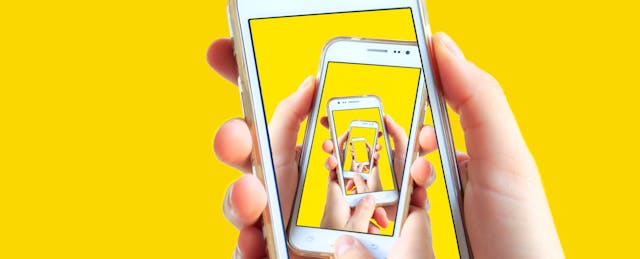Technology can collect and harness more data than ever before. But with that comes greater risks to personal privacy and potential for misuse. Those building, funding and using edtech tools must similarly wrestle with these concerns.
In education, does technology create just as many problems as it solves? If so, what new challenges have emerged? As we bid farewell to the teenage years of the 21st century, we posed these questions and others to longtime industry entrepreneurs, analysts and stakeholders about the highs and lows, wins and woes of the past decade.
What problems have we solved—and what new ones have we created?

Jessie Woolley-Wilson (CEO, DreamBox Learning): In the past, educators were focused on how to get more devices in the classroom. We’ve largely succeeded—according to a recent Common Sense Media survey, eight out of 10 K-12 teachers have computing devices in their classrooms.
But we’ve learned technology alone does not drive higher achievement. Technology must support and empower better teaching and learning. Now, educators are focused on linking edtech tools directly to student learning outcomes. As an industry, we must embrace this opportunity, rigorously testing solutions to understand what’s working—and in what context—in order to continue unlocking learning potential for all students.
Larry Berger (CEO, Amplify): I think we’ve solved the problem of “teachers don’t know/don’t like technology.” Teachers now use technology in their personal lives and they find it useful in their professional lives. That doesn’t mean they like all of it. They have serious, well-informed concerns about what are the right ways and wrong ways to use tech in the classroom. But today, if you hear someone in our field saying that teachers aren’t good at technology, it probably means they have built a technology that isn’t good for teachers.
The new problem we have created is a dramatic increase in student anxiety. Students are stressed out. Hyper-stimulating media pervades their worlds, social media culture makes them feel inadequate, and existential pressures of economic, community and environmental decline hover over their futures. I think this is creating levels of anxiety that inhibit students’ abilities to sustain attention, to read for an extended time, to daydream, and to remember.
That’s a big problem we’ve created, and the consumer internet is not interested in solving it. It may be up to the field of education. The answer won’t be to take the technology away—prohibition never works. The solution will be to figure out how technology can support attention, relaxation, community and hope.
Shauntel Garvey (General Partner, Reach Capital): The launch of the iPad and Chromebook ushered in the age of devices in the classroom. Nearpod seized an opportunity to help the classroom teacher deliver tailored lessons and assess learning in real time. These devices accelerated the unbundling of content so that students can directly access leveled news articles on Newsela, or their favorite book on Epic. Platforms like Seesaw and Flipgrid leverage these devices to amplify student voice and create new connections.
With these benefits, however, come new problems including privacy, cyberbullying, and device addiction.

Frank Catalano (independent industry strategist): We’ve solved the problem of the often decade-long lag between a consumer technology being introduced and it finally winding up in the classroom. Computing devices and 1:1 programs are far more prevalent now than in 2010. School internet connectivity is so close to ubiquitous that the nonprofit tracking it is shutting down. Students no longer have to “power down” when they enter a classroom.
Yet what we’ve lost is the forced cooling saucer of time for tech to mature beyond a fad and prove itself before it’s in schools. The lack of that occasionally unwanted protective effect may lead to more unintentionally poor tech decisions.
Doug Levin (President, EdTech Strategies and K-12 Cybersecurity Resource Center): With the benefit of hindsight, it should have been completely predictable that deploying thousands of internet-connected computing devices (many running older operating systems, out-of-date software, and the latest and greatest free online app) to administrators, educators, and students would expose school districts to many of the same cybersecurity threats as those that plague multinational corporations and government.
Coupled with a focus on real-time data collection and analysis to inform both back office and classroom decisionmaking, the reliance on edtech in schools has led to increasingly severe data breaches, expensive and embarrassing disruptions to school operations, and the loss of millions of taxpayer dollars.
What technology has actually delivered on its potential and promise?

Larry Berger: In 1994, I sat in a conference room at NASA watching a consultant’s presentation about what it would take for 1:1 computing to arrive in K–12: The devices would have to drop below $150 and would need to be simple enough that the total cost of maintenance would drop below $50/year. As we took notes on our $2000 laptops, those stats seemed too far off. And we all assumed that the demand would spike, such that society would find a way to make 1:1 happen much sooner, at higher price points.
But the consultant was right. After a decade and a half of failing to arrive as early as we’d imagined, the pervasive 1:1 classroom snuck up on us in the last couple of years—when Google Chromebooks dropped below $150 and the cloud greatly reduced the need for maintenance expense and expertise. Now schools can generally afford and support the devices they need. That doesn’t mean every student has access to a device all the time. But in many schools, when a teacher needs a cart of devices, they can get it.
I’m confident that the coming decade will finally show the wave of breakthroughs in teaching and learning that can happen when technology, data and networks reach everyone in a system.
Jessie Woolley-Wilson: With 30 kids in the classroom, even the best teacher in the best circumstance can’t deliver tailored lessons for each student. Personalized learning technology that dynamically adapts to student needs while offering teachers real-time insight into each student’s performance has been proven to increase student achievement. While supporting learners with differentiated lessons, personalized learning technology builds additional capacity for teachers, and allows them to spend less time searching for individualized lessons and more time focused on the art of teaching.
What technology never lived up to expectations or the hype?
Frank Catalano: There are many that ran into the dual buzzsaws of entrenched practice and uneven implementation. Open digital badges. Certain interoperability efforts. But iPads did not live up to the hype that they would become the preferred delivery method for instructional content. Introduced in 2010, iPads spurred Dumbo Drops of tablet tech into classrooms. (Remember LAUSD’s failed effort?) It later became clear keyboards were needed at higher grades, expense and breakage were issues, and students could hack school protections. Chromebooks and lower-cost Windows devices built on inroads the iPad made to eat Apple’s market share lunch. Yes, iPads and tablets have a place, but were not a panacea.
What’s the dark horse of edtech? (An idea or tool that very few anticipated would take off...but actually did.)

Shauntel Garvey: When initially thinking about video conferencing, I like others envisioned a boardroom instead of a classroom. Yet, education institutions were early adopters of platforms like Zoom to enable virtual learning and online collaboration. Video conferencing is also powering the rapidly growing platforms that facilitate live, interactive learning experiences in both 1-on-1 and small-group formats. As video technology continues to improve and virtual learning environments begin to rival in-person options, a growing number of companies will provide new pathways for learners to acquire a variety of skills, from machine learning and management to piano and parenting.
Frank Catalano: It’s a very blocky dark horse that has turned into a Trojan Horse for games in the classroom: Minecraft. When its creator, Mojang, was sold to Microsoft in 2014, educators had every right to be freaked out that a homegrown educational modification might die. But Microsoft later bought the teacher-created MinecraftEdu mod, rebuilt it and relaunched it in 2016 as Minecraft: Education Edition. By every account, it’s been hugely successful and shows games in education can span both creative activity and academic subjects. It’s also helped boost Microsoft’s classroom cred and even is part of a new pop culture museum exhibition.
What prediction never panned out?

Doug Levin: The central—and undeniably incorrect—prediction of the book “Disrupting Class: How Disruptive Innovation Will Change the Way the World Learns” was that the growth in computer-based delivery of education will accelerate swiftly until, by 2019, half of all high school classes will be taught over the internet. The authors argued this prediction was inevitable given their belief that in the following decade: computer-based instruction will improve in quality; students will be granted increased choice in their ‘learning pathways’; there will be a teacher shortage; and computer-delivered instruction will result in significant costs savings. While each of these premises are empirically testable, only trends in the teacher workforce have risen to garner researchers’ serious concern and attention.
While many took (and still take) the book as a roadmap for the future of education, only future historians will be able to untangle the real opportunity costs we paid in exchange for the edtech-enabled education reform movement the book unleashed.
What trend or fad will resurface next decade?
Larry Berger: Personalized learning will have a renaissance in the next decade, now that people are getting smarter about what it is and what it isn’t. The hope that personalized learning would simply emerge out of big data and probabilistic algorithms preoccupied many innovators this past decade. Now, people are getting real about what kinds of personalization can really support a classroom in which teachers are still in charge and kids interact with each other.
The personalization of the next decade will help teachers give all students a pathway into shared learning experiences, with personalized support and personalized feedback. In some cases there will be an algorithm helping make this happen, but in many cases it will just be a matter of good design.


